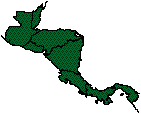Picture having to walk an hour to school or not having access to technology as simple as a calculator. For 17 visiting teachers from Central America who are studying here at Palo Alto College, this is reality.

“I walk or bike 20 minutes to school no matter what the weather,” said Gloria Morales from Guatemala. “Even when the river overflows and fish spill out onto the street.”
Rural schools in Central America range from those with water and electricity to those whose classes are in simple wooden and tin structures.
“Thanks to God, community cooperation and Plan International, an international group that helps rural schools in funding, I have the privilege of working in a school with electricity and water,” said Damaris Rossel from Guatemala.
The teachers from El Salvador, Nicaragua, Guatemala and Honduras are here for a year on a grant from the Cooperative Association of States for Scholarships (CASS) administered by Georgetown University in Washington, D.C.
“As part of the scholarship, they had to make a commitment to their country to go back and teach three years,” said Connie Espinoza, Academic Coordinator.
The scholarship includes housing at the Buena Vista apartments located near Palo Alto. Three to four teachers share a two-bedroom apartment, and each teacher receives a monthly stipend for necessities.
“We bought food together, but since the problem arose of having different tastes, I do not think we will be buying food together any longer,” said Sergio de Jesus Gonzales from Nicaragua.
Expectations of what the United States would be like differed for each teacher.
“For some, just hearing United States meant great experiences,” said David Montengro Gramajo from Guatemala. “For others, it meant that everything that is needed to know to teach would be reached.”
The teachers are here to learn computer skills, different teaching techniques and the English language. Connie Espinoza, ESL Instructor; Elias Campos, Leadership Instructor; and Francis Garza, Computer Instructor teach the class sessions, which begin at 8:30 a.m. and end at 5:30 p.m. Monday through Friday.
Although the rural teachers are in class for eight hours, taking only an hour for lunch, some do not see the time as an obstacle.
“So much time in class does not affect me because I teach Spanish, Math and Calligraphy to third and fifth graders from 8 to 11,” said Telma Gonzalez from Honduras. “Then in the afternoon, I teach Social Studies and Science.”
Different teaching techniques are being showcased to the teachers to help them capture their students' attention.
“We learned how to make puppets,” said Ana Romero from El Salvador. “Although we had the materials and the possibilities to do it in our country, we did not know how to use it. We already have plans to take it back to our country to use in our schools.”
Students in these communities sometimes share teachers. Nelson Mejia from Nicaragua teaches second and third grades in the same classroom. Mejia and others in the same situation have students work dependently and independently.
“Students are separated only by rows. While second grade is listening to me, third grade is working on their assignments,” said Mejia.
An average day for students begins at 7:30 a.m. and ends at noon. While students leave for home, teachers spend another two or three hours preparing lesson plans for the next day.
“More time is spent according to the content and complexity of the topic,” said Santos Hilario Tale from Guatemala.
To balance the teachers' academic experiences, the International Education Committee assigned one or two mentors to each teacher.
“We help provide a mentoring and nurturing relationship with the colega to help them in any way, as well as provide guidance and direction,” said Jessie Dominguez a Continuing Education Specialist.
Mentors also provide practical information so the visiting teacher can better adapt to his or her current environment. The relationship is beneficial for both mentors and the colega.
“I help my colega, Ana Romero, with oral communications and expressions of courtesy, which are vital,” said Rosa Samelson, a Foreign Language Professor.
“We still have problems communicating so we try to set up a time each week where Maria comes over and we are tutors for each other in English and Spanish,” said Irene Sharf, Coordinator of Information and Instructional Services at the Ozuna.
The rural teachers' experiences have not been limited to Palo Alto.
“We have seen the Alamo, the River Walk and Willie Nelson at the rodeo,” said Rolando Perez from El Salvador.
“This is a genuine group that is interested in improving themselves and their educational system,” said Sharf.
(Interviews were translated into English.)